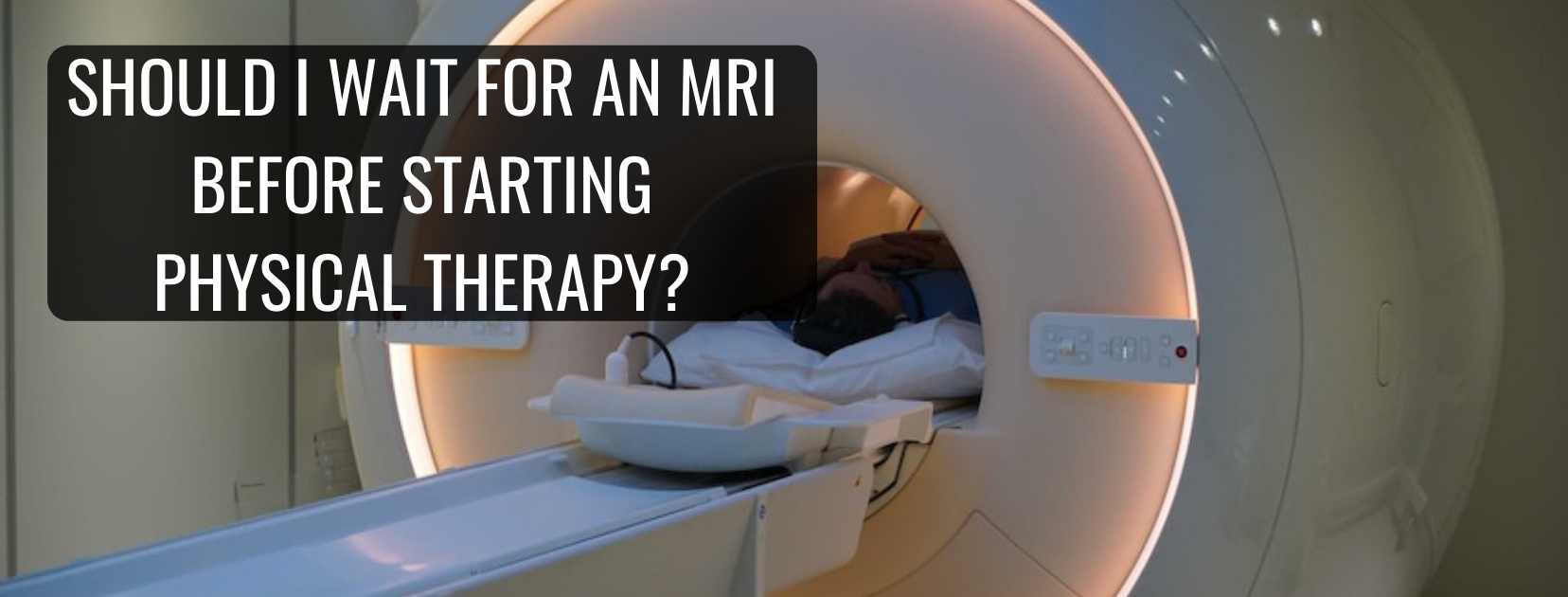
30 Aug Should You Wait For an MRI Before Starting Physical Therapy?
Something we get asked on a routine basis is “Do I need to get an MRI?” So I’ll answer the question with a question, do you? The goal of this article is to have you better understand why, and more importantly WHEN you should start thinking about going for an MRI study.
X-RAY vs MRI
An X-ray is good for looking at bone, joint spaces, identifying fractures and arthritis. Often, when clients come to see us, an X-ray is by far the most common and first piece of imaging they receive. But what if you have a bulging/herniated disc? Or a torn ligament, muscle or tendon? Here’s where the MRI comes into play.
So if you are concerned about some type of tear, or a herniated disc, the question is, do you need an MRI?
The answer is, not necessarily. Here’s why…
Before we go the MRI route, there are some things to consider:
- One, physiotherapists are able to spot and differentiate various musculoskeletal dysfunctions. Including, signs of a bulging disc compressing a nerve, rotator cuff or labrum tears in the shoulder. We do this through movement assessments, special tests, and then contrast our findings to your history.
- Two, many injuries that may sound terrible, actually respond well to PT. For example, a rotator cuff tear is surprisingly common and in many cases does not require surgery.
- Three, most people want to avoid surgery or more invasive procedures. And generally speaking, an MRI is one step closer to surgery (more on that later).
Knowing this, we should be asking ourselves 2 questions:
1) Is this something that can be treated?
2) Can I get back to doing the things I want to do without surgery?
Finding the answer to both of these questions puts us in the right place to make the best decision going forward. The fastest and best way to answer these questions is to take a proactive approach and see someone when something is not right. Whether it be a primary care physician, an orthopedic, or a physical therapist; see someone. Be sure to ask these questions to your provider.
“I JUST WANT TO KNOW WHAT’S GOING ON”
Sometimes people just want to know exactly what is going on. This is a fair point, and I wouldn’t blame anyone for wanting to know more about their own health.
However, I would argue that in most cases, going for an MRI is taking one step closer towards surgery. I say that because an MRI is most useful at the point when you are considering surgery. If there is a concern that the injury is beyond conservative treatment then it’s time to start thinking about an MRI in order to make a more informed decision going forward.
DON’T WAIT!
There is nothing wrong with being as informed as possible about your own body. But it’s when we decide to wait for the results of an MRI that I have an issue with. By the time you get in to see a doc, get the prescription for an MRI, get the appointment, go to the appointment, get the results, consult with your doctor about the results, precious time was wasted while you could have been working on getting better.
THE BIG PICTURE
Just to be clear, the MRI is arguably the most powerful diagnostic tool used in today’s medicine. I am not here to argue against them or their significance. But they don’t tell us the whole story, and what they do tell us isn’t always relevant or significant.
Take this as food for thought, there are several studies that show findings of lumbar spine degeneration, or bulging/herniated discs in people that are completely asymptomatic. Other studies have shown that there is no difference in outcome following a rotator cuff repair vs conservative treatment at the 12 month mark.
The great and powerful orthopedic surgeon Dr. James Andrews said “if you want a reason to operate on a baseball pitcher, take an MRI”. This is in reference to how common MRI findings are in the shoulders of high-level throwing athletes.
So what does this tell us?
Everything said so far is to point out that we have to keep the bigger picture in mind. It is important to consider that as we age, and keep active our body will adapt. Meaning that some things like a bulging disc, may be a normal part of aging, but it may unassociated with pain.
SUMMARY
- Find out if Physical Therapy can help
- Ask your healthcare provider if they think you can return to activity and avoid surgery
- Take action
Still unsure?
Call us at (817) 438-6583, we offer free 15-minute calls or contact me via email at [email protected]

REFERENCES
- Brinjikji W, Luetmer PH, Comstock B, et al. Systematic literature review of imaging features of spinal degeneration in asymptomatic populations. AJNR Am J Neuroradiol. 2015;36(4):811-816. doi:10.3174/ajnr.A4173
- Cederqvist S, Flinkkilä T, Sormaala M, et alNon-surgical and surgical treatments for rotator cuff disease: a pragmatic randomised clinical trial with 2-year follow-up after initial rehabilitation. Annals of the Rheumatic Diseases 2021;80:796-802.

